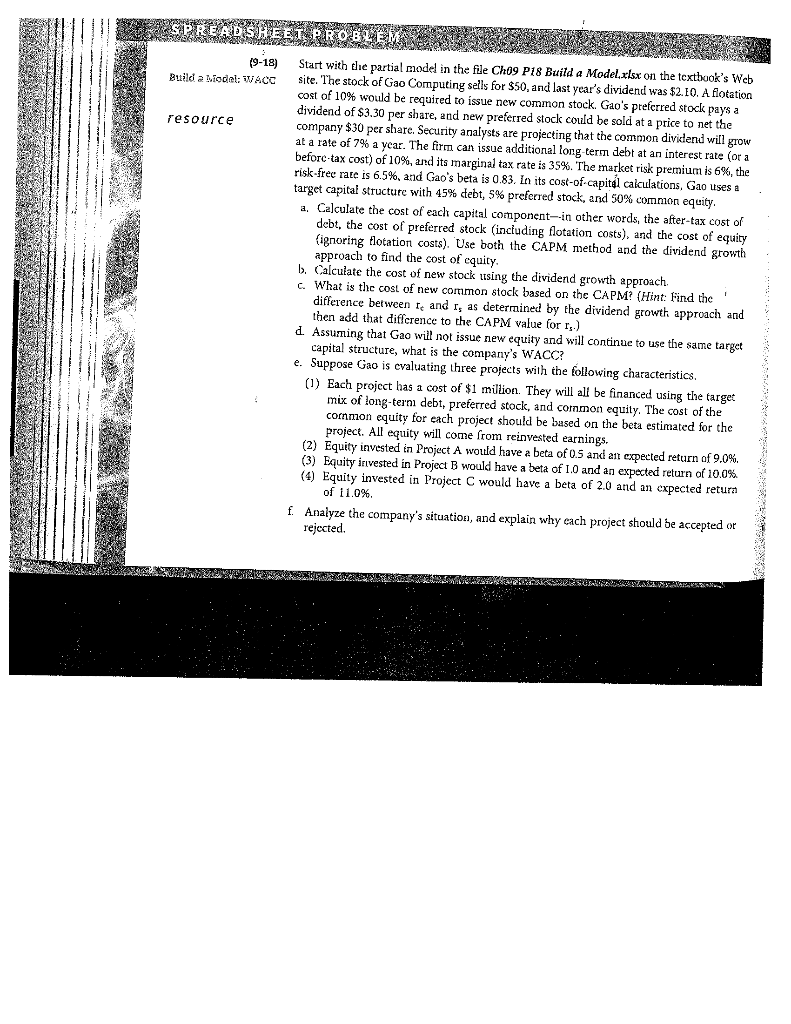
SPREADSHEET PROBLEM (9-18) Start with the partial model in the file Ch09 P18 Build a Model.xlsx on the textbook's Web Build aniodel: VACO site. The stock of Gao Computing sells for $50, and last year's dividend was $2.10. A flotation cost of 10% would be required to issue new common stock. Gao's preferred stock pays a dividend of $3.30 per share, and new preferred stock could be sold at a price to net the resource company $30 per share. Security analysts are projecting that the common dividend will grow at a rate of 7% a year. The firm can issue additional long term debt at an interest rate (or a before-tax cost) of 10%, and its marginal tax rate is 35%. The market risk premium is 5%, the risk-free rate is 6.5%, and Gao's beta is 0.83. In its cost-of-capital calculations, Gao uses a target capital structure with 45% debt, 5% preferred stock, and 50% common equity. a. Calculate the cost of each capital component-in other words, the after-tax cost of debt, the cost of preferred stock (including flotation costs), and the cost of equity (ignoring tlotation costs). Use both the CAPM method and the dividend growth approach to find the cost of equity. b. Calculate the cost of new stock itsing the dividend growth approach. c. What is the cost of new common stock based on the CAPM? (Hint: find the difference between fe and I, as determined by the dividend growth approach and then add that difference to the CAPM value for rs.) d Assuming that Gao will not issue new equity and will continue to use the same target capital structure, what is the company's WACC? e. Suppose Gao is evaluating three projects with the following characteristics. (1) Each project has a cost of $1 million. They will all be financed using the target mix of long-term debt, preferred stock, and common equity. The cost of the common equity for each project should be based on the beta estimated for the project. All equity will come from reinvested earnings. (2) Equity invested in Project A would have a beta of 0.5 and an expected return of 9.0% (3) Equity invested in Project B would have a beta of 1.0 and an expected return of 10.0% (4) Equity invested in Project C would have a beta of 2.0 and an expected retura of 11.0% f Analyze the company's situation, and explain why each project should be accepted or rejected







